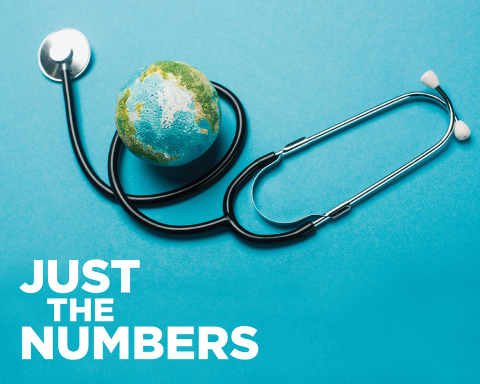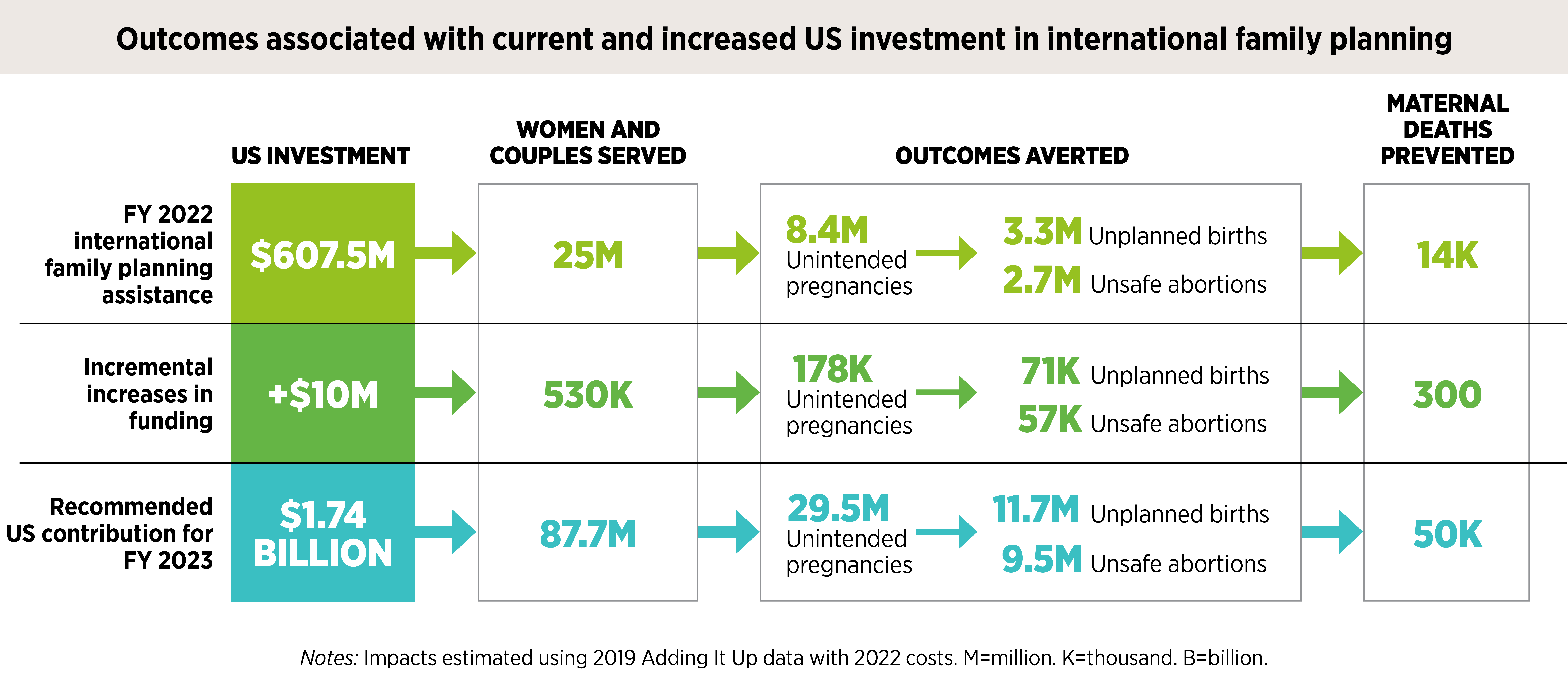This publication has been updated, please see here for the latest version.
Corrected on December 21, 2023
Our original impact estimates were slightly inflated because of the following issues and have been corrected in the text and graphic below. Our original calculations included a small amount of appropriated regional funding that we should have dropped from the analysis. In addition, family planning costs were in 2019 US dollars and have now been adjusted to 2022 US dollars accounting for country-level inflation. Finally, we based the original estimates on a recommended appropriation amount that included all UNFPA funding, rather than the proportion that specifically goes to family planning activities.
Investments in sexual and reproductive health and rights have profound and measurable benefits. Such investments not only promote health and well-being throughout people’s lives but also contribute to improvements in gender equity, political stability, economic development and environmental sustainability.1
US support for international family planning
Family planning is a fundamental component of comprehensive sexual and reproductive health care. The United States supports family planning services through financial assistance and coordination of programs across multilateral entities. The U.S. Agency for International Development (USAID) plays a critical role in increasing access to family planning information, services and supplies in more than 30 countries where the need is greatest. USAID's family planning program supports service delivery, contraceptive provision, and monitoring and evaluation, among other activities. It also seeks to integrate family planning with efforts to end child marriage and gender-based violence, maternal and child health interventions, and HIV programming.
To complement its bilateral work, USAID collaborates closely with the United Nations Population Fund (UNFPA), a multilateral organization that focuses specifically on the delivery of family planning services and maternal and child health care in more than 150 countries and territories. After the Trump administration withheld funding to UNFPA for four years, the Biden administration, in 2021, restored funding to the agency at the original level earmarked in 2011. This renewed investment plays an important role in supporting family planning and reproductive health programs and improving health outcomes globally.
For federal fiscal year (FY) 2022, Congress appropriated $607.5 million in US assistance for global family planning and reproductive health programs, including $32.5 million for UNFPA. This represents the 13th consecutive year for which this funding has remained the same—even while FY 2023 funding increased for all other parts of the global health portfolio. While the United States remains a leading donor in this area, this stagnation in funding represents more than a decade’s worth of missed opportunities to support the growing contraceptive needs of women and girls globally.
Benefits of current and increased investment
The graphic below shows the benefits of the US investment in terms of the estimated number of unintended pregnancies, unplanned births, unsafe abortions and maternal deaths averted. It also shows the estimated benefits expected to accrue for every additional $10 million increase in funding. Increased US investment in family planning is needed not only to meet the rising costs of providing services but also to reach the large number of women and girls with an unmet need for modern contraceptive care.
If the United States had increased its FY 2023 investment to $1.74 billion, including $116 million to UNFPA, the benefits would have been substantial. Compared with the current investment, the estimated number of unintended pregnancies averted would have increased from 8.4 million to 29.5 million, and the number of maternal deaths prevented would have increased from 14,000 to 50,000. This level of investment, which is recommended by the International Family Planning Coalition and other groups, represents the annual sum needed for the United States to contribute its fair share of the cost of addressing family planning needs worldwide.2
Methodology and sources
Estimates of the impacts of current and increased investment were calculated by dividing family planning allocations to countries and regional offices for FY 2021 by estimated 2019 country-level per-user impacts, which come from the most recent comprehensive analysis of costs and impacts of family planning in low- and middle-income countries.3–5 Impacts per user were estimated as the difference between the annual number of events that would occur if all women wanting to avoid pregnancy used modern methods and the number that would occur if they relied on traditional or no methods.4
Country-level per-user costs were updated to 2022. Funding allocated to regional offices, rather than countries, was included if some or all of the funding was allocated to countries, determined using information from USAID.6 It was estimated that 25.67% of funding to UNFPA went to family planning–specific activities.7
Just the Numbers estimates for 2022 are not directly comparable to prior iterations of this analysis. The estimates do not account for the impact that the Trump administration’s so-called global gag rule or the COVID-19 pandemic may have had on access to and provision of family planning services.8–10


